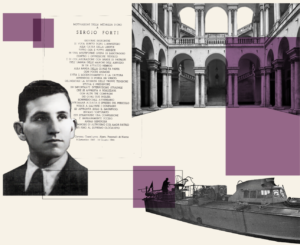REMEMBRANCE – “Jewish partisans, not victims”
 Between the Marche, Abruzzo and Umbria regions of Italy, 57 Jewish partisans fought during WWII against the Nazi-Fascists. «In these regions the Nazi occupation lasted a year. They were marked, especially Abruzzo, by the construction of the Gustav German defence line. To retrieve the histories and the names of Jewish partisans has not been easy, but with our work we went beyond my expectations,” historian Liliana Picciotto explained to Pagine Ebraiche. This work is the Contemporary Jewish Documentation Center Foundation’s (CDEC) research project, initiated in 2022, on the contribution by the Italian Jews to the Resistance between 1943 and 1945.
Between the Marche, Abruzzo and Umbria regions of Italy, 57 Jewish partisans fought during WWII against the Nazi-Fascists. «In these regions the Nazi occupation lasted a year. They were marked, especially Abruzzo, by the construction of the Gustav German defence line. To retrieve the histories and the names of Jewish partisans has not been easy, but with our work we went beyond my expectations,” historian Liliana Picciotto explained to Pagine Ebraiche. This work is the Contemporary Jewish Documentation Center Foundation’s (CDEC) research project, initiated in 2022, on the contribution by the Italian Jews to the Resistance between 1943 and 1945.
After working on Campania, Lazio, Toscana, Marche, Emilia-Romagna and Liguria regions, now another piece has been added with the names of those who in Marche, Abruzzo and Umbria risked or lost their lives in the name of the Liberation of Italy.
“The idea of the whole project is to give back to Jews an image that is not only that of victims. It was after all CDEC’s and its young founders’ initial project: giving a voice to Jewish partisans and their stories”, stressed Picciotto. The names and documents retrieved by the historian and her research group are gradually merging in the portal resistentiebrei.cdec.it. There are currently 377 names listed: 337 men and 40 women.
Confinement in central Italy and the partisan choice
As for Marche, Abruzzo and Umbria, the historian said, the peculiarity lies in the presence of many foreign Jews, confined in these areas by order of the Fascist regime. Along with them, several families of Roman Jewry converged in the area, particularly after the armistice of 8 September 1943. It was a diverse representation of the Jewish world, from which the profiles of partisans studied by CDEC emerged. “We are talking about very embryonic forms of resistance, never or little organized, except for a few karst rivers in which groups of people gathered to fight against the Nazi-fascists”, went on Picciotto. This is not to say, she added, that there is a lack of heroic episodes and most importantly “that each one of these Jewish partisans isn’t to be remembered with pride.”
Sergio Forti’s sacrifice
Among the many stories, four were given in-depth study by CDEC through a podcast by Bianca Ambrosio. The profiles recounted are those of Sergio Forti, Haim Vito Volterra, Max Federman and Luigi Fleichmann. Forti was a man from Trieste, a naval lieutenant, fired by the army following the racial laws because he was Jewish. After the armistice, he went south to Umbria-Marche Apennines where his parents had a house. “He immediately joined the partisans ranks and became commander of the ‘Melis’ team in the Norcia area. He was a naval and mechanical engineer and with his group he mainly carried on sabotage actions against the German forces.” In the Norcia area, as Picciotto explained, Forti and his team planned a major diversion to put the Germans in a difficult position. “However, during this operation the group was surprised by the enemy. Forti decided to fight the German soldiers by himself, allowing his comrades to escape. He got caught, tortured, and killed. He was posthumously awarded the Gold Medal of Military Valor.” A great little story to be rediscovered, just like the others that are gradually brought back to light thanks to the “Resistenti ebrei d’Italia” project.
Translated by Chiara Tona, student at the Advanced School for Interpreters and Translators of the University of Trieste, trainee in the newsroom of the Union of the Italian Jewish Communities – Pagine Ebraiche.
